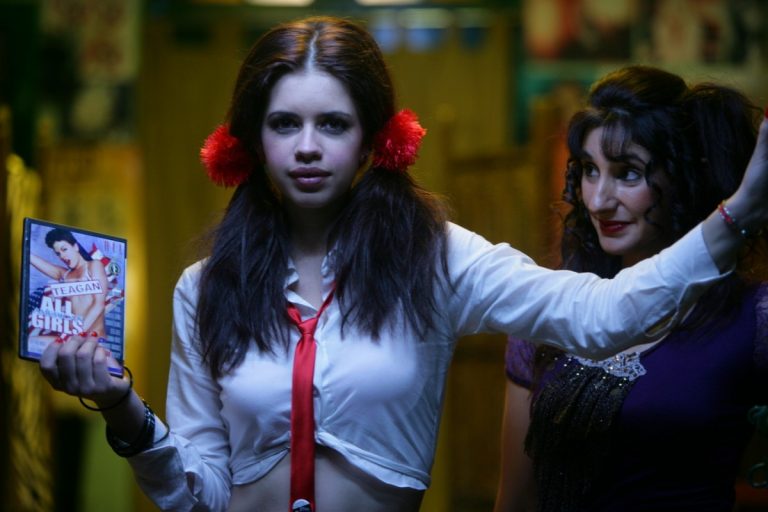With films like “The Witch” (2015) and “The Lighthouse” (2019), filmmaker Robert Eggers has already strengthened his reputation as a critically celebrated auteur. And in “Nosferatu” (2024), he replaces the expressionist wonder of “Nosferatu: A Symphony of Horror” (1922) with the somber moodiness of his craft that shapes up the fictional town of 1830s Germany, called Wisburg, which is unaware of the oncoming of evil. In it resides realtor Thomas Hutter (Nicholas Hoult) and his newlywed wife, Ellen Hutter (Lily-Rose Depp). There’s also their friends Friedrich Harding (Aaron Taylor-Johnson), a rich merchant, and Anna Harding (Emma Corrin), who are happily married to each other with two daughters.
“Nosferatu” (2024) is dark and aggressively sensual but Eggers’ vision of the material is more of a treatise on power and evil. He makes the classic story of a real estate agent, Thomas Hutter, going up to the Pennsylvanian hills to secure a property deal with the Count while leaving his newlywed wife behind about madness, obsession, guilt, and shame. His retelling focuses more on the experiences of Thomas’ wife, Ellen Hutter, and the psychosexual dynamics between her and the Count.
On Vampires – Shifting Trajectories
Academic writings on vampires and vampirism suggest that the vampire, in all of its forms, reflects a “polymorphic resilience,” which has allowed it to evolve across geography, cultures, media, and time. This makes the vampire a versatile and enduring figure in the global entertainment industry. Today there are many variations of the vampire. Let’s say, Indian vampire films, as seen in the works of the Ramsay brothers, are distinctly located in the Indian cultural and storytelling framework. They are influenced by local monsters and demons like Chudails and Pichas highlighting their antagonistic qualities over the anti-hero stature in Western films. Meanwhile, Korean vampire films focus more on the emotional connection and romantic longing between the vampire and its subject.
Some female vampires are not supernatural but predatory women who defy conventional norms of femininity. Their inspiration lies in Rudyard Kipling’s 1897 poem “The Vampire” and Sheridan Le Fanu’s “Carmilla” (1872), only Carmilla does not desire men but women. There is a host of lesbian vampire films across genres, and a quick Google search is sufficient to find them. Other than that, the ones inspired by Kipling depict women who set out to emotionally, mentally, and socially destroy men. They function along the archetypes of the vamp and the femme fatale.
Then there are vampire films that are satirical in nature, where the vampires themselves face an acute crisis of identity and struggle for liberty. They often question what they do in the shadows while experiencing a loss of selfhood. There’s the development of a humanist conscience and they often problematize themselves through acts of self-discipline and restraint. Some vampires are even humanists to the point that they seek consenting suicidal persons to suck their blood out! Hence, vampires in the 21st century are far removed from their original positioning as a gothic entity and fugitive outsiders which were located between sex and desire. Scholars and critics therefore regard the history of vampires as one of continuous transformation and genre-blending.
Today the idea of the vampire has evolved from an Irish and European folkloric figure into a complex symbol that represents not only horror and desire but also many social and political themes. Rooted in late Romanticism and popularized in the 18th and 19th centuries, the vampire has been shaped by historical figures like Vlad the Impaler and the literary works of Lord Byron and John William Polidori.
The Byronic hero contributed to the vampire’s noble and aristocratic traits and presented it as a vessel of mysterious and seductive qualities. It also introduced the concept of a vampire capable of humanity, shifting the character from its atrocious selfhood and monstrous identity. Such consciousness of the vampire image largely dominated fantasy fiction both in literature and cinema. But it is Bram Stoker’s “Dracula” (1897), that is often credited to serve as the primary model for the classical screen vampire. It betrays Byronism as it goes on to be overtly malevolent in its actions and motives. While retaining his seductive assertion, he seeks to conquer and corrupt using his shape-shifting, immortality, and mind-control powers.
Also, Read – 7 Classic Vampire Movies To Watch If You Loved ‘Nosferatu’
The Vampire in Robert Eggers’ Nosferatu (2024)
But the vampire in Robert Eggers’ “Nosferatu” is feral. It harks back to an early folkloric version of vampires as grotesque, night-haunting revenants. It’s a tangible ghost that can do material harm to living beings. Bill Skarsgard as Count Orlok cements himself as a modern horror icon as with his previous roles that included the terrific clown, Pennywise, in “It” (2017) and Eric in “The Crow” (2024). In “Nosferatu” (2024), he transforms into a terror-inducing and filthy portrayal of Count Orlok. There’s a disease in his skin and a growl in his voice. His appearance in the film can be defined as more of a horrific unearthly feeling that lurks in the dark rather than the tall, physical presence of a cursed relic.
By creating a monstrous vampire with an otherworldly turn, Robert Eggers engages with the primal dimensions of horror – fear, and death – in their most fundamental form. Eggers’ vampire resists a well-defined comprehension, as it is with the themes of death, decay, and the unknown. The closer the vampire draws, the further he distances himself from an understanding. This is because the narrative does not invite sympathy for the vampire, as it is not the creature’s story like other films but rather that of Ellen Hutter, the human protagonist.
Moreover, many folklore tales reflect the attempts made by humanity to make sense of what could not be explained by the scientific knowledge of the time. Vampires, in folklore, represented that unknown – the mysteries of disease and death. Robert Eggers’ treatment of vampires retains this historical ambiguity. There is a deliberate lack of explanation to preserve the traditional perception of vampires as the unknowable. The power and the sense of dread are exercised through a distance of uncertainty.
This is why Prof. Albin Eberhart von Franz’s (Willem Dafoe) mystical analysis and the occult mumble jumble that he keeps referring to largely remain unexplained in the film. Nor does the film have an explanation for the occult practices of Herr Knock and how they connect to Ellen and Count Orlok. It is only over time, that the vampire myth transitioned from being a mysterious subconsciousness to a more conscious and explored concept through literature, films, and other media.
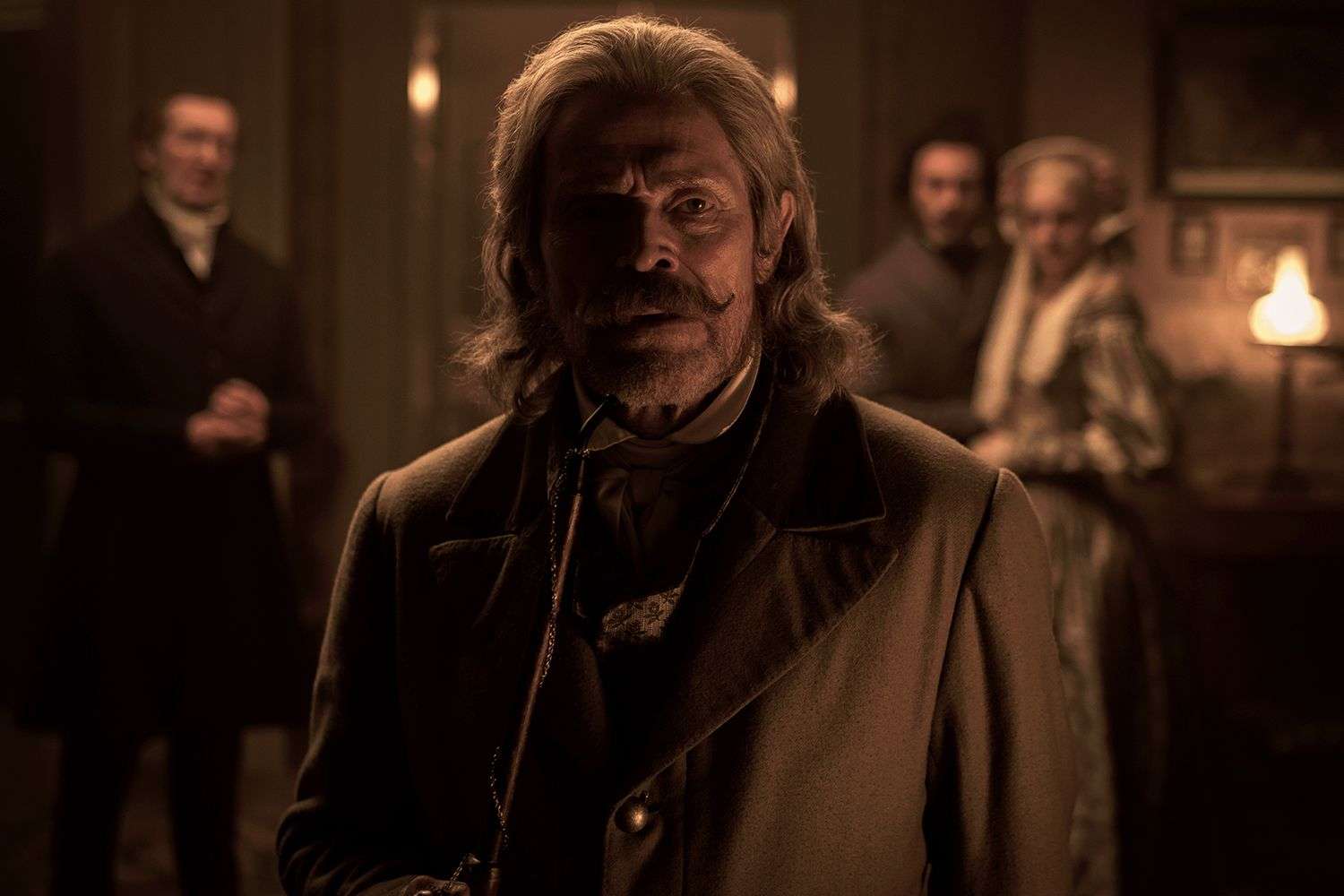
The Image of the Vampire as Power and Political
To write about the asymmetry of power, the Count commands great power over Thomas, as he is forced to sign an agreement in a language he doesn’t understand (and hence hand over his wife to the Count, formally), and also Ellen as he drives her close to madness. Under his powerful spell, Herr Knock (Simon McBurney), Thomas’ employer, blindly devotes himself to the cause of evil. Herr Knock’s descent into madness results in visuals that can make one’s stomach churn but his blind devotion & subjugation, set in a historical period of nationalism and revolution, has far more relevant takeaways than a mere relationship between a loyal servant and a toxic leader.
The creation of the vampire image has had a political subtext since its early days. Their representations were influenced by European revolutionary rights discourse and later the industrial age clashes between nature, wealth, and power. Take into account, the antisemitic readings of F. W. Murnau’s “Nosferatu” (1922). Then, the legacies of colonialism and globalization led the vampire to become a global symbol of economic and political predation, as it was adapted across diverse cultures, including African and Asian traditions. In that regard, can Eggers’ re-incarnated tropes of vampirism be read politically in the current socio-political climate of authoritarianism, neo-liberalism, and identity politics or the broader geopolitical and health issues such as pandemic, bio-warfare, and climate change?
The Gothic Genre and its Criticism of Victorian Culture
However, any discussion on vampires would be incomplete if we fail to consider some defining features of the Gothic genre. Robert Eggers’ approach in his reimagining of Murnau’s 1922 silent horror classic is distinctly focused on the thematic and technical exploration of evil. His take on the vampire myth is deeply engrossed in Victorian aesthetics and the poetics of gothic horror. Eggers’ craft is rooted in the highly sensory atmosphere that the film builds through vast, dark, and dodgy landscapes of old, crumbling castles and high collars and hoop skirts of civilization. The foggy exteriors and gloomy interiors engage in a game of hide and seek under the hollow moonlight. There are also beards and mustaches at plenty, and even the Count gets one! The darker color palette contrasts with the pale white snow which is swallowed by the shadows of those who walk above or through them.
The gothic tradition of eroticism and sexual tension is faithfully a part of Eggers’ film. But there’s also an inherent tendency of analyses to channel Ellen Hutter’s ordeal by making an association of her condition to the liberal notions of sexuality and claiming it to be an assertion of her agency as a woman while also critiquing the Puritan sensibilities of Victorian culture.
But “Nosferatu” (2024) is not a tale of sexual reawakening or traditional non-conformism that hinges on the ideals of empowerment. In one aspect, Robert Eggers’s monster is a form of pure evil. It regards no notion of reason or right. Nor does it care about any religion or might. In one scene, Prof. Albin Eberhart von Franz says “I’ve seen things in this world that would make Issac Newton crawl back into his mother’s womb”. This evil is beyond comprehension. It is monstrous and unforgiving and holds no heed about love, family, or morality. Soon, they all succumb to the darkness that spreads after the arrival of the Count to Wisburg.
As an immediate consequence, Ellen gets into a perennial mode of anxiety and dread imposed upon her by the thoughts of her husband who is away from her. Then there’s her cardinal bodily desire which is constantly seeking a form of expression since before her marriage. In fact, “Nosferatu” (2024) begins with an emotionally unstable Ellen calling out to the universe in search of an angel or a spirit to connect with her. This call wakes up the undead. And now, in the absence of her husband, this desire is exploited by the Count. He torments and tortures her so much that she despises it. “You are a villain to speak so”, Ellen states looking at Orlok.
But, the vampire, if interpreted through a gothic framework, is indeed a symbol of suppressed desires and sexuality. And in this case, the vampire is a personification of Ellen’s repressed desires. “It is not me. It is your own nature”, says the Count. Now, if the physicality of this symbol is ugly and cruel (as mentioned above, vampires in other films have mostly appeared polished and elegant), it means that Ellen’s view of her own desires is so. And that means, she is not proud of her actions and herself.
In other words, if the origins of vampires as a myth emerged from our subconscious as a representation of our darker nature, then the ability to defeat the vampire symbolizes our capacity to conquer the darkness within ourselves. This theorization already gives an idea of the ending of the film. Ellen soon suffers from episodes of hysteria and nightly terrors sensing the omnipresence of the dark fate that’s about to come upon them.
Masculine Hold of Female Agency?
As a result, Ellen is tied to the bed and confined to a room. The men charged with protecting her perceive not only her seizures but also her blood and her womb as a factor of worry. Their fear is not rooted in a masculine desire to dominate her or her sexuality (as seen with any liberal feminist reading of the film), but rather in their anxiety and lack of understanding over her condition. Eggers frames this fear as one born out of the unknown, for it is evident that he is coming. “Who is coming, my dear child?” inquires a bewildered von Franz. They are concerned. It is not control but care.
Eggers also presents us with the contrasting image of two women – Anna Harding, the wife of Friedrich Harding, who fully embraces the societal expectations of purity and passivity owing to motherhood and domesticity. Yet, despite her resolution, there is no grief or sorrow in her. In contrast, Ellen Hutter resembles the ‘fallen woman’ according to the moral standards of her time. But what we must understand here is that this evil is devoid of any sexual morality. The Count is indiscriminate in his predation. He preys on everyone and spares none. He mercilessly kills the children first and then goes for their mother.
“Nosferatu” (2024) then becomes a tale of beckoning and reckoning. It’s only on Ellen’s call out to the universe that the Count gets hold of her as he slowly wraps himself around her ever-growing loneliness, desire, and melancholy. This in return, made him all the more powerful. Also to note, in vampire mythology, it is believed that these creatures can only enter a personal space if they are explicitly invited. This is the source of Ellen’s regrets years later when she devotes her love to her husband, Thomas. She speaks of shame and guilt but at the same time, there’s also an equal resentment towards her man’s inability to please her. So, the unfulfilled desire lingers keeping the Count’s connection to her alive. Hence, she questions, “Does evil come from within us or beyond?”
Nosferatu (2024) – A Tragic Love Story
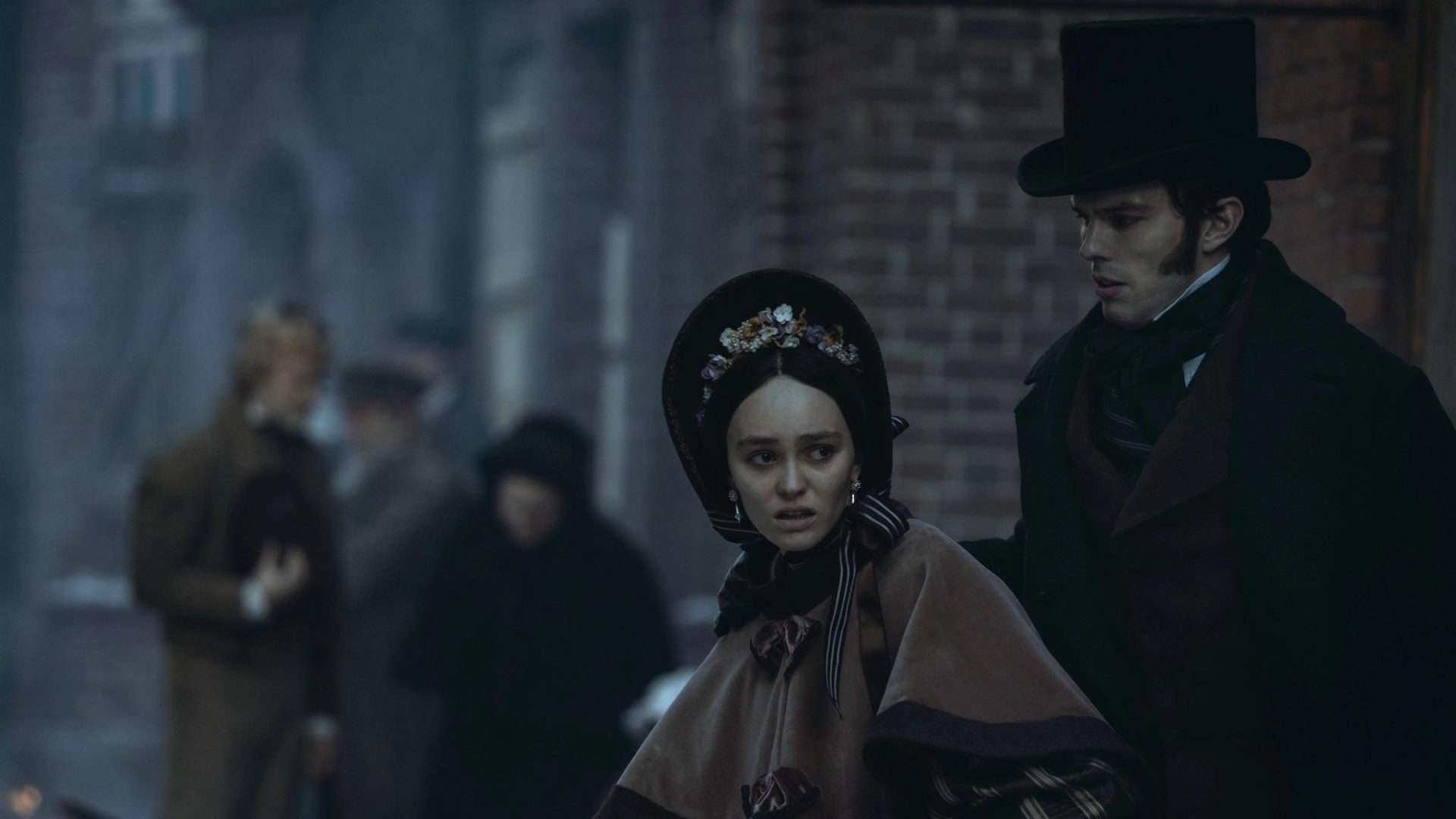
Sure, the narrative punishes Ellen for her transgression. Confronting the consequences of her past actions and desires, Ellen breaks free from her repression by taking herself and the Count to death. She doesn’t live to love Thomas again but her sacrifice saves him, the town, and many more lives. In this way, “Nosferatu” (2024) becomes a story of tragic love through the lives of its two main characters: Thomas, who fights for love, and Ellen, who dies for love. Friedrich Harding is also presumed dead, along with the remains of his wife and children – another individual in the film who died for the cause of love.
Eggers’ treatment of the subject reflects a bittersweet end much in line with his earlier films. He retains the core aspect of the romantic duel from the first film, particularly when we take Count Orlok’s obsession over Ellen into account and see it alongside Thomas’ attempt to save his wife. Thomas fails in saving his wife but his wife succeeds in saving the day. The relationship between ‘life’ and ‘death’ and the past haunting the present is a characteristic trait of old vampire movies and Eggers remains faithful to it. The past doesn’t merely refer to the specter of darkness here, but Ellen’s own past where she longed for companionship and comfort after the death of her mother.
Sacrifice and Salvation
There is also the theme of the failure of medical and/or scientific discourse in both versions of “Nosferatu.” Von Franz’s empirical understanding helps to conclude that the suffering is not caused by the plague and he also does not dismiss the possibilities of the supernatural and the mystical. And if we care to look the other way, Eggers also adds a metaphysical layer to the connection between Ellen and Orlok.
Therefore, Ellen’s sacrifice was a given. Count Orlok does mention that she is not of humankind. She has innate psychic abilities that allow her to connect with him in the first place. Ellen’s death can hence be interpreted not as an end, but as a return to her true nature or origin. It’s her freedom from the misery and pain of the living world. But did Count Orlok, in his obsession with Ellen, seek to free himself from his own curse through her?
Actually, it was never Orlok’s obsession over Ellen. He is just a force of nature. He was summoned by her emotional vulnerability and her need to seek comfort in the otherworldly beckon. Orlok is, as he states, just an appetite. His desire for her is not purely one of lust or domination, but a desperate need to break free from his endless, soulless existence as much as that is itself a need for Ellen. In that light, both the characters are engaged in a form of existential struggle, and Ellen’s sacrifice becomes not only an act of salvation for others but possibly one that liberates herself and Orlok as well.


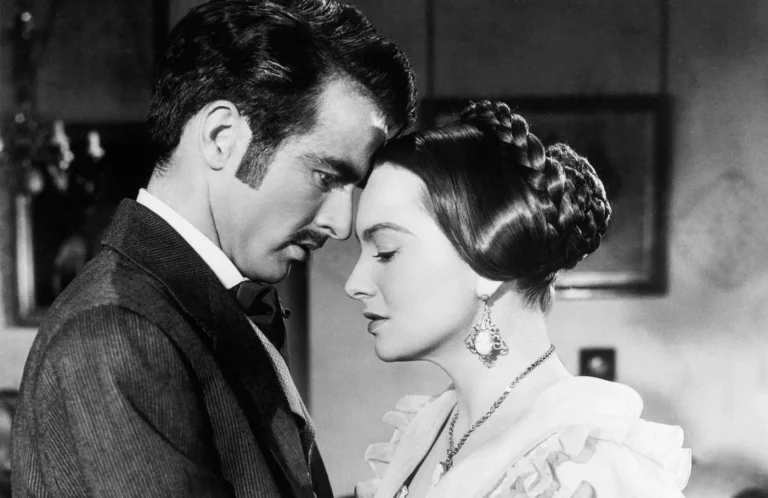

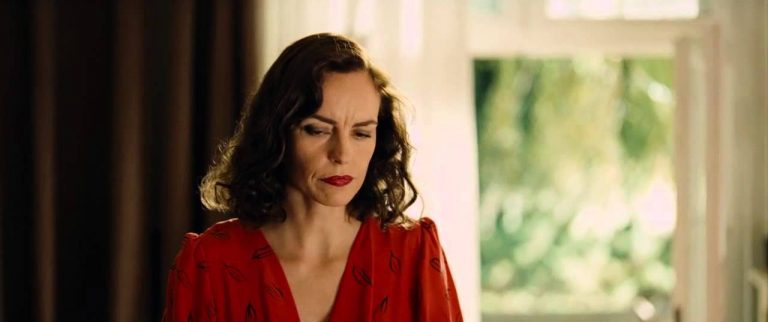
![Garm Hava [1974]: On the Precipice of Belonging](https://79468c92.delivery.rocketcdn.me/wp-content/uploads/2021/05/Garm-Hava-768x432.jpg)
